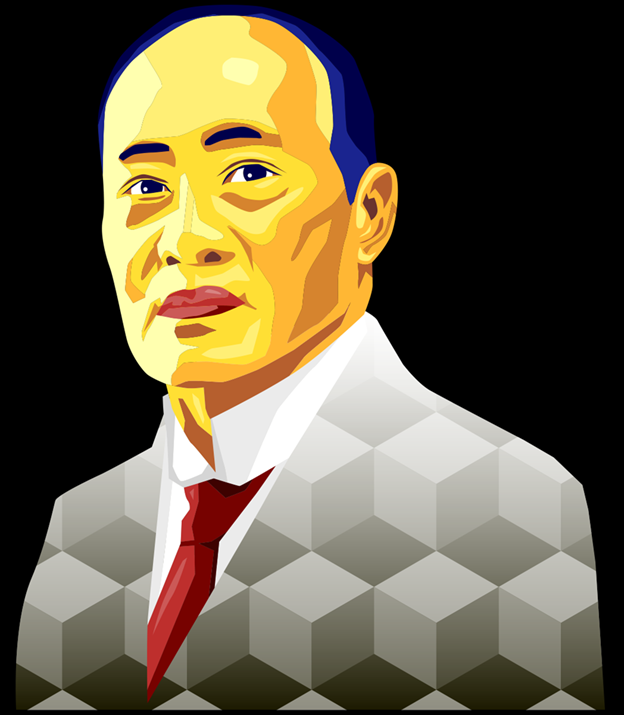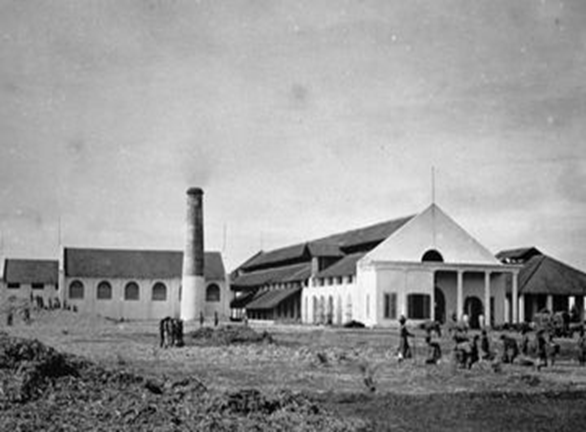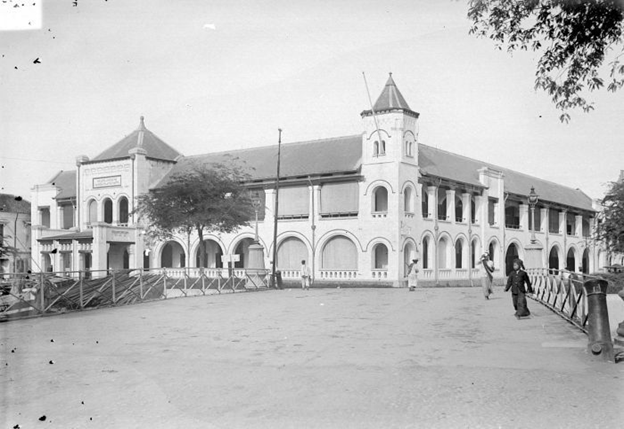In the late 1800s and the first half of 1900 – 1961, it was in Semarang that the economic epicenter emerged with the growth of the first conglomeration in Southeast Asia which had businesses to the United States and Europe. This multinational business network was established by entrepreneur Oei Tiong Ham (OTH), heir to the Kian Gwan which later became known as Oei Tiong Ham Concern (OTHC).
Trade has been a prominent feature of Oei Tiong Ham (OTH), a Chinese born Indonesian tycoon. His family came from China and his father, a Chinese -born migrant, Oei Tjie Sien (OTS). OTS established a trading house, KIAN GWAN in 1863. He saw trading opportunities which lured the Dutch to the Eastern hemisphere as well. The business that OTH inherited from his father, began to develop in 1870 following the abolition of Cultuur Stelsel (Forced Cultivation) in the Dutch East Indies.
OTH owns 81 hectares of land in the center of Semarang City, his resident was around the Gergaji area, Semarang. His large house, which is often called the Balekambang Palace, is now still intact and is the office of the Regional III Financial Services Authority for Central Java on Jalan Kyai Saleh, Central Java.
At the beginning of the 20th century, Oei Tiong Ham was nicknamed the Rockefeller of Asia, equating himself with John D. Rockefeller, the oil conglomerate owner of Standard Oil and Company New York (SOCONY) from the US.
The foresight has driven the KIAN GWAN for more than 90 years to be the largest trading company in the world. At the peak of his glory around the 1920s, Oei Tiong Ham (OTH) was nicknamed Mr. 200 million Guilders, because he was the first businessman whose wealth reached 200 million guilders or around Rp. 27 trillion at current exchange rates.
The opening of the Suez Canal was the changing era that OTH saw. He invested in shipping by steamship, it made trade between Asia and Europe faster.
OTH’s initial strategy was gradually to build up dominance in the highly lucrative opium market. The rise of the company was the opium trade which was legal in the Dutch East Indies. However, the company then expanded its business sector to trade various other types of commodities while opening branch offices and warehouses in several countries.
OTS created a multinational trading company, KIAN GWAN focused on its orientation toward business as well as their access to intra-and extra -archipelago trade networks. It was vital after the post war boom of 1918-1920. The worldwide demand for sugar in Java was high then. Various commodities such as gambier, pepper, and others were collected from outside Java and brought to Java and Singapore.
OTH resumed control of the company in 1890 when he was 24 years old. In 1893, the company was changed from N.V. Handel Maatschappij Kian Gwan to Oei Tiong Ham Concern (OTHC). It became the largest conglomerate in Southeast Asia at the beginning of the twentieth century to originate his involvement in sugar industry, where his wealth accumulated.
During 1880, there was a sugar crisis and he acquired five sugar factories. Sugar now became the backbone of the company and would remain so for the next generations.
The total land area of the five sugar factories reaches 7,082 hectares. He controlled productions and trades in sugar.

In 1910, Kian Gwan expanded overseas with the opening of a branch company in London. Kian Gwan took over FC Grein renamed it as Kian Gwan Western Agency Ltd. In five years, the company sold 725,000 tons of sugar from Java to British India (India), Japan, China, the United States, the British Empire, and the European continent. The export figure reaches 145,000 tons per year.
Amsterdam and New York’s branches were also opened through their agency network, Seligman and Company, which the latter dealt primarily in the tapioca trade.
The branch in Calcutta (now the city of Kolkata, India), opened in 1925 and Mumbai in 1926 and Karachi in 1928. These happened after OTH died in 1924 and the business empire was continued by his children.
Due to the declining sugar trades from Java, Kian Gwan changed its strategy to business in cotton, wool, and jute sacks. Furthermore, in 1932, in Bangkok, a branch office was established to handle the rice and jute sack trades.
Meanwhile in China, Kian Gwan opened branches in Shanghai, Hong Kong and Amoy (Fujian Province). In 1934, business developed rapidly in China through an alcohol distillation factory in Pootung District, Shanghai. It produces alcohol with levels of 96 – 97 percent.
Branches in Malaya and Singapore were also opened which, among other things, had a shipping business in 1911 under the name Heap Eng Moh Steamship Company Ltd. The paternal family of Singapore's First Prime Minister, Lee Kwan Yew, once worked at the company. Heap Eng Moh operates vessels operating between Singapore and Java.
Kian Gwan also opened a banking and property business with N.V. Bank Veereniging Oei Tiong Ham in 1906 and Bouw Maatschapij Randusari N.V. which businesses were in housing, offices, and warehousing.
Kian Gwan's banking partners in the Dutch East Indies were not only Javasche Bank, Nederlansch Indie Handelsbank, and Nederlandsche Handel Maatschapij (now Bank Mandiri). Kian Gwan also has regular relations with Chartered Bank of India, Australia, and China (now Standard Chartered Bank) and Hongkong and Shanghai Bank Corporation (HSBC).
OTHC gradually integrated its plantations, mills, shipping lines, banks, and complementary enterprises. OTHC was also groundbreaking in employing professional personnel, instead of relying completely on family members in the old Chinese way. OTH helped create a company culture where new ideas had a chance to grow and flourish. Only ownership of OTHC rested with the family.
During the post-war boom of 1918-1920, OTH ingenuity and determination set OTHC followed a cautious policy during these boom years. He did not speculate too heavily and took steps to improve its financial administration. OTH recruited talented accountants to set up a modern accounting system for the sugar factories. Due to the cautious and independent strategy, the company survived the subsequent sugar crisis while many other Chinese firms perished.
The OTHC grew and diversified rapidly around 1920’s. It started branches in London, Amsterdam, Singapore, Bangkok, and New York, created a bank, a steamship business and had a large wholesale business. Of all the ethnic Chinese business conglomerates in pre-war Asia, the OTHC was by far the largest. The company was even larger than the well-known “Big Five” Dutch trading companies that supposedly dominated the foreign trade of the Indies. The OTHC was strong in foreign trade, particularly in China.
That is what happened to Oei Tiong Ham's business empire during World War I and the Malaise era, then Oei Tiong Ham died on July 9 1924 in Singapore. Furthermore, the Sino-Japanese War, World War II and the Indonesian War of Independence made the Kian Gwan business group's business situation shaky due to political upheaval.
The descendent of the OTH has continued the trading and expanding its businesses into circular economy and green sustainability. Value the experiences and resources of abundant raw material; with diversified business portfolio included agricultural and forestry products as well as managing plantations.

Oei Tiong Ham (1866-1924)


